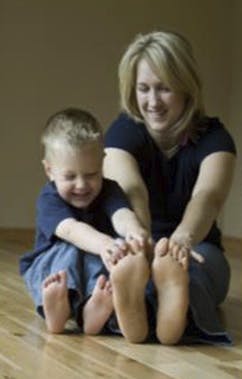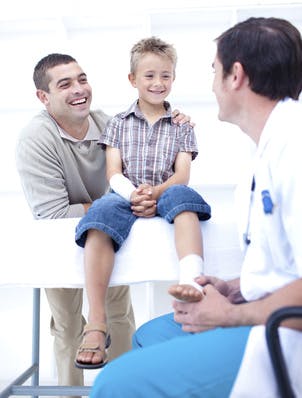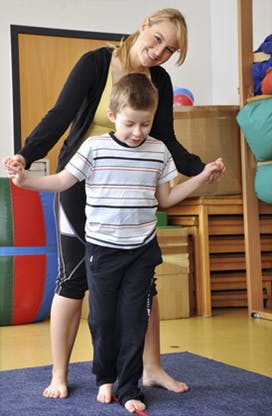Getting a Jump on JA

Early diagnosis is critical to help children with juvenile arthritis. JA affects more than just joints and can actually represent a hazard to growing bones. Youngsters with JA are at risk of bone loss and weakened bones due to inflammation that make them more susceptible to fractures, including those of the spine. Physical therapists can help with:
- Strengthening bones and muscles
- Relieving pain
- Reducing inflammation
- Maintaining range of motion
- Nutritional advice
- Monitoring bone density
- Alleviating sleep disturbances

Eating a healthy diet is essential for children with JA, but parents and caregivers need to be aware that some foods can cause inflammation and flare-ups that can result in loss of appetite. Some medications can cause dietary disruptions and problems ranging from dry mouth to excessive thirst. Other youngsters may experience high-appetite episodes and medications for JA can disturb appetite and eating habits.
Childhood Arthritis and How Physical Therapy Can Help
Juvenile arthritis (JA) isn't a specific disease, but an inflammatory and autoimmune condition in youngsters under age 16. JA affects approximately 300,000 children just in the U.S. and it's classified within seven different types, depending upon a range of symptoms and co-conditions.
All forms of JA have pain, swelling and inflammation in common and include:
- Juvenile idiopathic arthritis (JIA), which is the most common
- Juvenile dermatomyositis results in muscle weakness and a rash on the knuckles and eyelids
- Juvenile lupus is an autoimmune disease affecting the joints, blood, kidneys and skin
- Juvenile scleroderma causes tightening and hardening of the skin
- Kawasaki disease is marked by inflammation of blood vessels
- Mixed connective tissue disease combines symptoms of other types
- Fibromyalgia is more common in girls and causes pain, stiffness, fatigue and sleep disruptions
There's no cure for JA, no way to test for it, and a single cause hasn't been determined but it may have a genetic component. With early detection and the help of a physical therapist, symptoms can be managed and lessened, and flare-ups reduced. The goal of physical therapy is to relieve pain, maintain mobility, and improve quality of life.
Managing JA with PT

Your physical therapist will provide therapies designed to relieve pain, enhance bone strength, maintain mobility and range of motion, and build endurance. A customized program of specialized exercises will be developed that will factor in the many facets of your child's condition.
Multiple exercises are available that children can perform independently and manual manipulation is available if your child has difficulty moving on their own. Hydrotherapy is an excellent exercise therapy that alleviates the effects of gravity and weight on your youngster's body, making movement easier and less painful.
Therapeutic massage helps relieve pain, inflammation and improves circulation. It's also beneficial for relieving tension and stress that can cause a flare-up of symptoms. Massage therapy has a strong psychological component that helps ease your youngster's anxiety, fear and frustration of coping with the condition and it promotes restful sleep.
Your child's physical therapist may employ heat and cryotherapies for relief from pain and inflammation, along with dry needling, acupuncture, or electro-stimulation for older youngsters. Assistance is also available with crutches, canes, walkers and wheelchairs when applicable to help reduce the risk of falls and injuries and improve mobility.
Nutritional counseling and supplement recommendations from your physical therapist ensure your child has the necessary resources for health. Specialized accommodations, ergonomic solutions and adaptive techniques help your child perform tasks easier, more comfortably, with less pain, and with less chance of injury. Being as self-sufficient as possible improves confidence and your child's self-image.
Children with juvenile arthritis face multiple challenges and your physical therapist can help manage every stage of the condition. The techniques and therapies will help your youngster stay active, manage pain and flare-ups, and improve quality of life.

